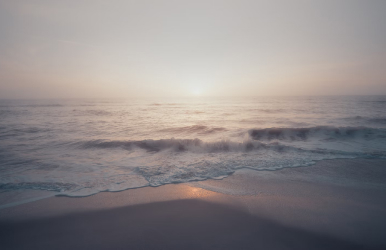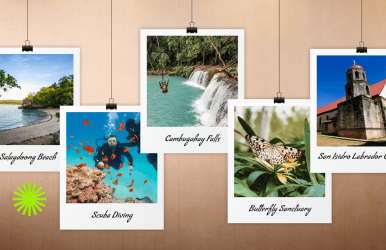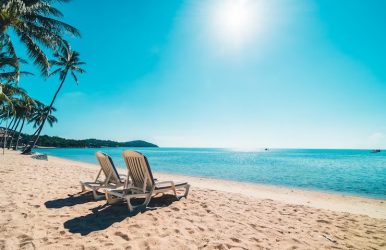What Are The Most Unique Things To Do In Siquijor? Into The Heart Of The Philippines
BY Sibashree Jun 28, 2025
A group of researchers from the University of Santo Tomas has prepared a full-fledged report on how sustainable tourism can be the future of Siquijor. The study, “Conservation of Sustainable Ecotourism on the Island of Siquijor through Sustainable Alternative Livelihoods, Training and Development,” has also factored in the needs of the inhabitants to promote sustainable tourism on the island. Siquijor remains a hidden gem while Bohol and Cebu, its neighbors, get more attention. However, Siquijor has the serene vibe, mystical charm, and natural beauty to be a tourism hotspot. Additionally, it enables you to be part of cultural discovery, adventure, and relaxation. So, you can be an adrenaline junkie or someone who enjoys the company of nature. Siquijor has everything for different types of travelers. Do you also feel like unwinding in Siquijor? Let’s talk about the things to do in Siquijor in this Tour and Travel Guide. However, before that, I want to discuss how to travel to Siquijor. How Do I Travel To Siquijor? Enjoy A Beautiful Ferry Ride Siquijor does not have an airport. You have to reach this island in the heart of the Philippines by ferry. You can take a ferry from Cebu or Dumaguete. Dumaguete is the closest neighbor of Siquijor, and the ferry ride will take around 1 hour. From Cebu, a ferry ride to Siquijor will take 4-5 hours. Are you traveling from Manila? Take a flight to Dumaguete or Cebu and then a ferry ride to Siquijor. Unique Things To Do In Siquijor: What Is Siquijor Famous For? March to May, or the dry season, is the best time to visit Siquijor. The sea remains calm during the dry season. So, water activities, including boat rides, become the most enjoyable in these months. Now, many people project Siquijor as a year-round attraction. However, it experiences heavy rainfall from October to June. Also, the sea becomes tumultuous during these months. However, irrespective of the time of your visit, you will love the following things to do in Siquijor. 1. Plan A Visit To The Cambugahay Falls A beautiful three-tiered waterfall in Lazi! Cambugahay Falls looks stunning with the backdrop and surroundings of lush greenery. Further, it has crystal clear water, gleaming in the Sun. The things to do here are: Swimming Relaxing Soaking in the natural beauty of the island Dipping into the natural pools And? You can live your Instagram dream by swinging from the vine rope hanging above the water. You have to take a short trek through the jungle path to reach the waterfall. 2. Visiting The Old Enchanted Balete Tree: The Spirits Are Waiting When the BBC called Siquijor “A paradise island with a reputation for witchcraft,” we all took note. But how did it get its name? Let’s decode. Also known as the “Mystical Island,” Siquijor is also home to the Balete Tree. This ancient tree located in Enrique Villanueva town is 400 years old. In local folklore, various spirits and supernatural beings live in this tree. The tree is gigantic in size, and it is surrounded by cool and clear spring water. 3. Enjoying The Turquoise Water And White Sand Beach At Salagdoong Beach Do you want to relax at the beach? Salagdoong Beach will be your go-to destination. White powdery sand and turquoise water make it stand out. Located in Maria, this beach also offers an adventurous experience as you dive from the dramatic cliffs, with heights ranging from 8 to 15 meters. The Sun goes down, and after a day full of adventure, you need to relax. You can take the small local cottages for rent and spend the night watching the Moonlight dancing in the water. 4. Scuba Diving At Siquijor’s Best Dive Spots: Things To Do In Siquijor Siquijor has Paliton Beach, where divers can explore coral reefs, underwater caves, and vibrant marine species such as sea turtles, reef sharks, and tropical fish. Another popular dive spot is Mae’s Rock, where divers can see an abundance of underwater creatures, such as: Nudibranchs Lionfish Macro Critters Are you a beginner? Don’t worry, as the island has many diving schools that will help you start your scuba diving journey. 5. Visiting The Siquijor Butterfly Sanctuary: Things To Do In Siquijor Do you want to learn about the life cycle of butterflies, their role in the ecosystem, and conservation efforts in the region? Visit the Siquijor Butterfly Sanctuary in Lazi. It is also a beautiful place to take photos for your socials and stroll through the peaceful gardens. 6. Exploring The Old Churches And Historical Sites: Being Familiar With The Essence Of Siquijor St. Francis of Assisi Church in the town of Lazi is one of the most prominent historical landmarks of Siquijor. This stunning Spanish-era church was built in 1857, and its coral stone construction still evokes a sense of awe! San Isidro Labrador Church is another attraction here, and it is one of the oldest churches in the Philippines, dating back to the 16th century. 7. Trekking To Mt. Bandilaan National Park: Nature And Mysticism At Its Best Hike to the Bandilaan and enjoy the most thrilling panoramic view of the island and the surrounding ocean. Also, the national park has a natural spring and a sacred grotto. Thus, trekking through this national park feels like a spiritual experience. 8. Be A Part Of The Healing Festival And Know The Island’s Spiritual Heritage In the month of May, Siquijor hosts the Healing Festival. Spiritual guides, herbalists, and local healers gather to share their knowledge in the following sectors: Energy healing Natural remedies Traditional medicine It is your chance to be a part of healing treatments and workshops on ancient practices of the island. 9. A Nighttime Firefly Tour: You Will Not Find This Experience Anywhere Else Picture a scene! You are lying on the beach, and suddenly, fireflies eradicate the darkness and light up the night sky! This is what you will see on a firefly tour in Siquijor. Quiet rivers and mangrove forests on the island are the ideal location. You can take a ride in the banca boat or kayak to spot the fireflies in the trees, around you, and everywhere! 10. Have The Most Amazing Seafood And Beach Experience When in Siquijor, don’t miss: Grilled fish Shellfish Crabs Sinigang na baboy Kinilaw You must also try the local desserts and bring some fresh produce as cherished souvenirs.












